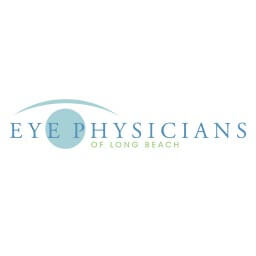Blog post by: Eye Physicians of Long Beach

Tis the season for gift giving and what better way to show your loved ones you care than by giving them the gift of sunglasses. Living in California, we love that the sun shines year around but we should also be aware of the effects the sun has on our eyes.
UV radiation given off by the sun is a major concern to not only our skin, but our ocular health as well. Other sources of UV radiation that pose a threat to our vision include welding machinery, lasers and tanning beds. There are three types of UV radiation, UV-A, B & C. UV-A and UV-B radiation are the most harmful to us while UV-C is absorbed by the ozone layer and does not pose any threat.
Three major eye conditions influenced by UV-A and UV-B radiation are pterygiums and pingueculas, cataracts, and age-related macular degeneration. A pinguecula is a proliferation of cells resulting in a growth that begins on the conjunctiva, the white part of the eye. Due to repeated sun-exposure a pinguecula may grow onto the central part of the eye, the cornea. Once this occurs it is termed a pterygium and can affect one’s vision.
Cataracts are another commonly encountered ocular condition. A cataract is a clouding of one’s natural lens resulting in decreased and blurry vision. Although cataracts are a normal age-related change, UV radiation can accelerate their maturation.
Age-related macular degeneration (AMD) is a leading cause of vision loss among the senior population. The macula is a component of the retina, the posterior portion of the eye, and is responsible for our most detailed vision. Due to a variety of factors including age, smoking, genetics and UV light, patients with AMD slowly experience a deterioration of the macula leading to vision loss.
As UV radiation is a factor in all three of these conditions, proper sun wear is indicated to prevent the formation and progression of these conditions. We recommend that our patients wear proper sunglasses and a cap with a wide brim when outdoors. When purchasing sunglasses, the American Academy of Ophthalmology wants patients to be aware of the many options that are available to them.
Patients should look for sunglasses that indicate they block 99% or 100% of all UV light. Impact resistance materials such as polycarbonate lenses are important for those that are very active, in sports or those working with hazardous materials and heavy machinery. Wraparound frames are also a great option as they limit sunlight from many different angles. Also, different tinted lenses are available to consumers and darker shades provide better comfort in brighter conditions. Another option is polarized lenses. Polarized lenses have a special coating that decreases glare reflected off of solid surfaces such as water and pavement. Driving and fishing are two scenarios in which polarized lenses may be beneficial. Yet another option is photochromic lenses; they darken in bright light and subsequently become lighter in low light. This feature can be added to almost any pair of glasses and the gradient change takes minutes depending on the light conditions. Finally it’s important to educate children and teenagers to wear sunglasses as they tend to spend more time outdoors than adults.
Be sure to visit us at Eye Physicians of Long Beach for your comprehensive eye examination. It is a good way to monitor your eye health, maintain good vision and discuss your options for sun protection. As this year comes to an end, what better way to use your vision benefits and flex spending than by getting a good pair of sunglasses. From our EPLB family to yours, Happy Holidays!
